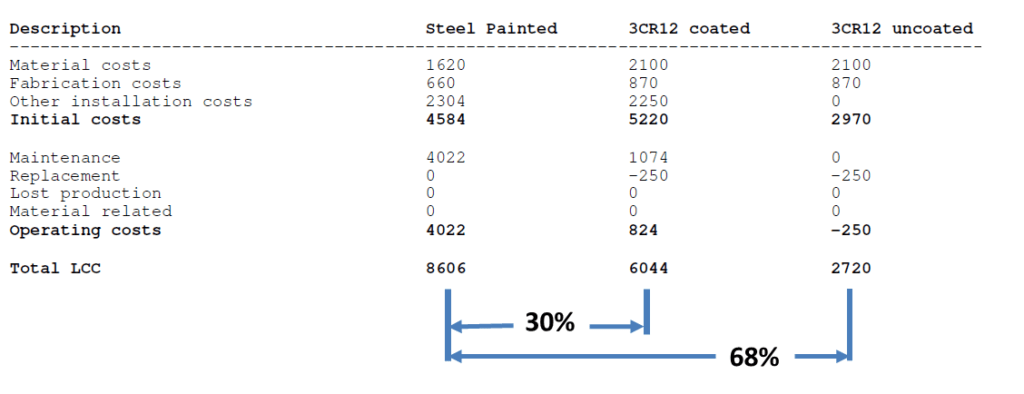- Perspective – July 2021
- Advert : Columbus Stainless
- Industry Insights & Analysis
- Market Intelligence
- Demand Sector
- Advert : NDE
- Market Insight
- Case Study – A Guide to Life Cycle Costing Analysis
- Industry News
- Africa Market Intelligence – Botswana
- Africa Market Intelligence – Nambia
- Profile Passionate Professionals
- Training Overview
- Advertorial : Columbus Stainless Champions Safety Week
- Advertorial : Macsteel Business Transformation focus delivers Independent Ownership
- Obituary
- Advert : Malondi Capital Investments
A GUIDE TO LIFE CYCLE COSTING ANALYSIS
Most users, especially fabricators, of stainless steel will know it is an alloy of mainly iron and chrome that makes stainless steel suitable for virtually any application.
However, we often find ourselves with a potential customer that resists stainless steel based on the initial purchase price of the material. We cannot argue this fact, but we also accept that you must dig deeper in your pocket for lasting quality. We accept this fact when buying a house, a car, or a microwave so why not when choosing the best material for a product or project?
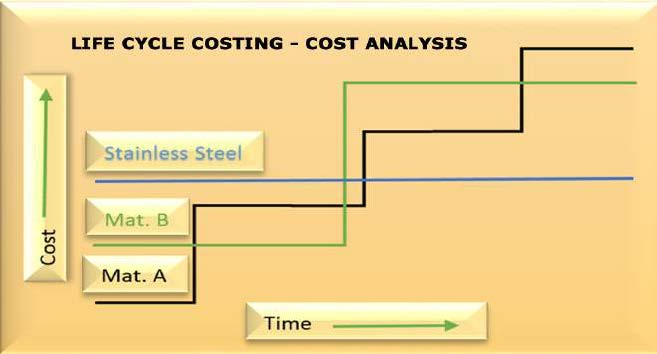
HOW LIFE CYCLE COSTING IMPACTS SUSTAINABILITY
To achieve this optimum selection, it is imperative to use the process of Life Cycle Costing (LCC). This provides a method of assessing the costs that occur throughout a project’s lifespan, from raw material procurement, fabrication, and construction, through use and maintenance, to end-of-life. In so doing, it gives a more robust insight into long term costs and savings, compared to ROI-based calculations.
The full cost of a project would include projections for items such as:
• future rates of interest and inflation;
• designed or expected maintenance intervals and costs (both material and labour);
• desired service life.
When assessing materials, costs consideration should be given to long and short-term factors such as:
• initial investment;
• maintenance level and frequency;
• downtime effects;
• production losses, repair, replacement; and
• other operationally related costs such as manpower and energy consumption.
The manner in which the calculation of the total Life Cycle Costing is formulated allows for all associated future costs to be calculated and expressed in present value monetary terms as a comparative benchmark.
LCC uses the standard accounting principle of discounted cash flow. Costs of maintenance and associated downtime can outweigh the initial material costs. From a sustainability viewpoint, it makes sense to calculate a full life cycle cost assessment. LCC is the sum of the acquisition cost, initial fabrication and installation costs, operational and maintenance costs, lost production due to downtime, as well as replacement costs. However, at the end of the project life, all material involved and still available can be retrieved for reuse or recycling. The value of this can therefore be subtracted from the total cost.
![]()
(end of life scrap value)
When using stainless steel, the end of life value becomes very important. In architectural installations, it is estimated that around 92% of the original material will be available for recycling. In the case of coated carbon steel or galvanised installations, this figure is closer to 68%.
Therefore, our industry can proudly say that more than 75% of all new stainless steel material comes from recycled sources.
CASE STUDY 1: THE RESIDENTIAL FENCE
A middle income family needs to install a security fence with the following options:
1. A carbon steel construction to be powder coated.
2. A 3CR12 construction to be powder coated.
3. A 3CR12 construction with no coating and allowed to age naturally
The Sassda LCC application yields the results shown below. The highlights being that the uncoated 3CR12 version will be 68% lower in cost over the 15 years life span. Even if the 3CR12 is powder coated it would still be 30% less expensive than the coated carbon steel version.
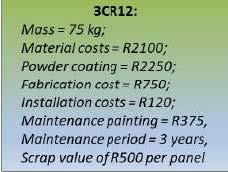
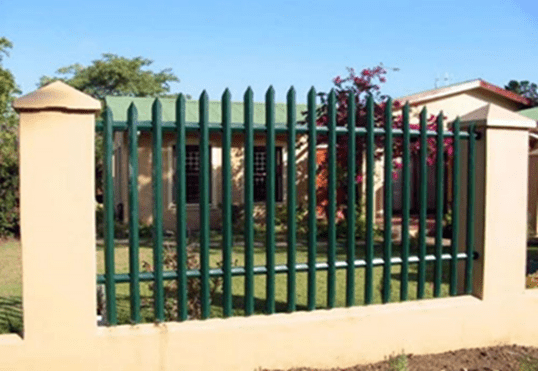
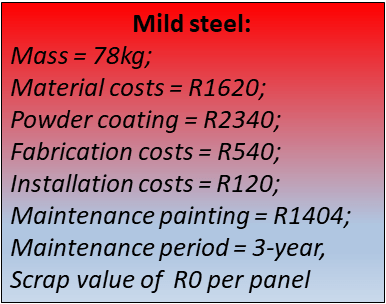
CASE STUDY 2: THE HYDROMETALLURGICAL WALKWAY
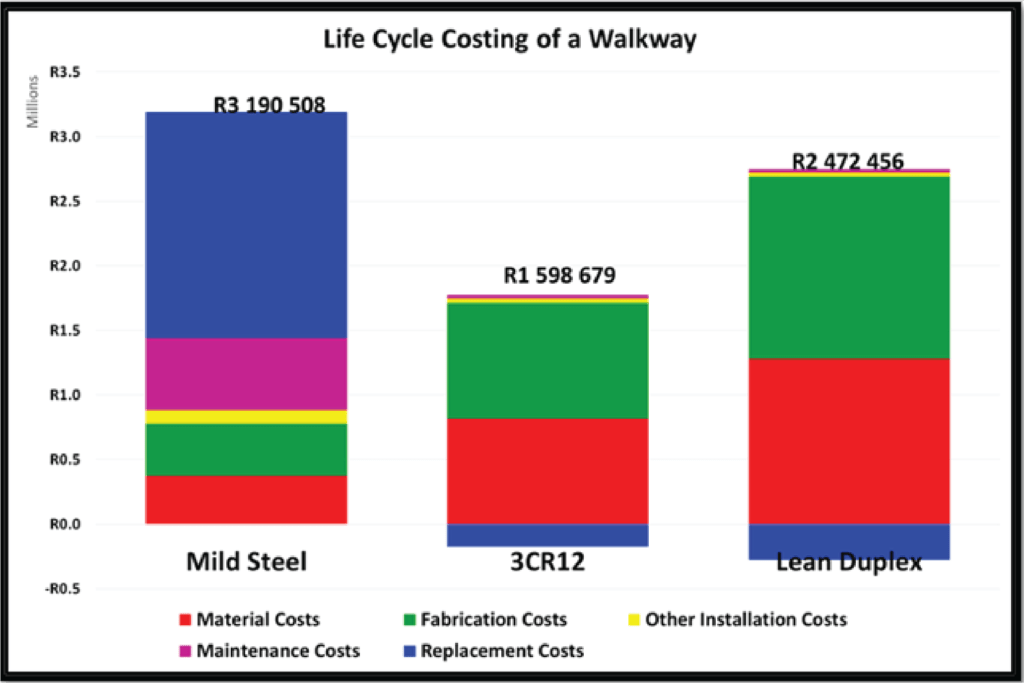
At a hydrometallurgical plant in Chile material must be selected for a walkway across corrosive areas in the plant. The service life is 30 years, and three possible material types are suggested for use:
1. Mild steel – The cheapest option, but requires maintenance on the protective surface every four years.
2. 3CR12 – Unpainted. Surfaces cleaned every 15 years with high-pressure water.
3. Lean Duplex – Expensive material but with exceptional mechanical and corrosion characteristics. Therefore, the material can be gauged down, meaning a reduced initial material cost.
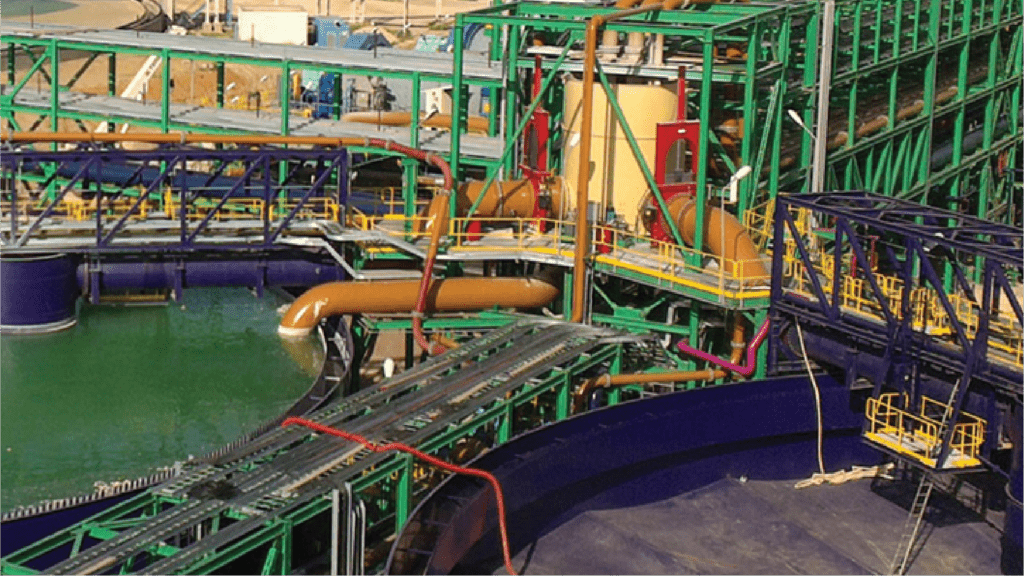
Once again, the results favour the use of 3CR12 showing a 50% reduction in life span costs compared to the mild steel option. Even the Duplex grade displays a reduction of 23% compared to the mild steel option. Take note of the impact of the end of life value.
CASE STUDY 3: THE EIFFEL TOWER

Imagine you need to reconstruct the Eiffel Tower with a design life of 100 years with the following options: once again 3CR12, a duplex 2101, and painted mild steel which is the material used on the existing tower. The 3CR12 will be allowed to form a surface patina with no maintenance required. The duplex will be maintained with a high-pressure waterjet every 20 years. It is no surprise that the life cycle cost of the 3CR12 option is around 50% of the mild steel cost. The Lean Duplex version registers at around 77% of the mild steel cost.
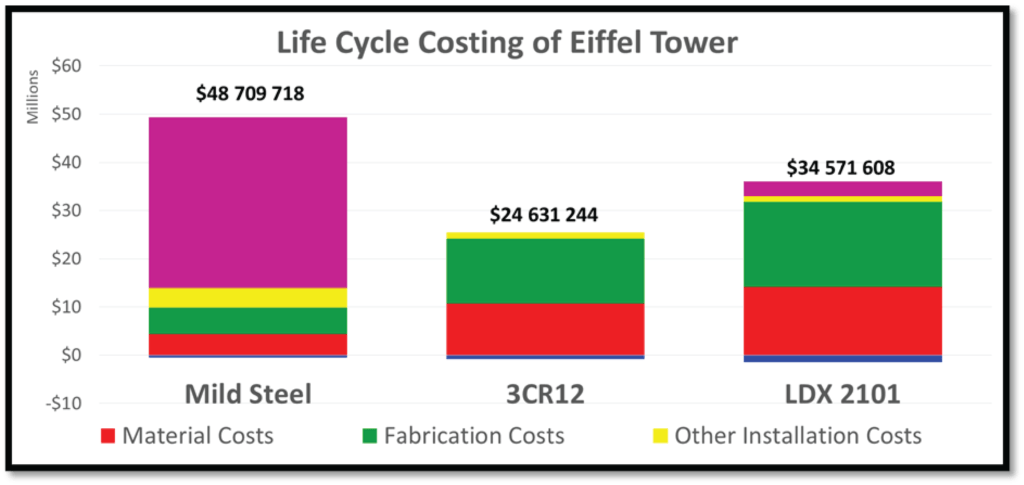
CASE STUDY 4: DRINKING WATER SOLUTIONS
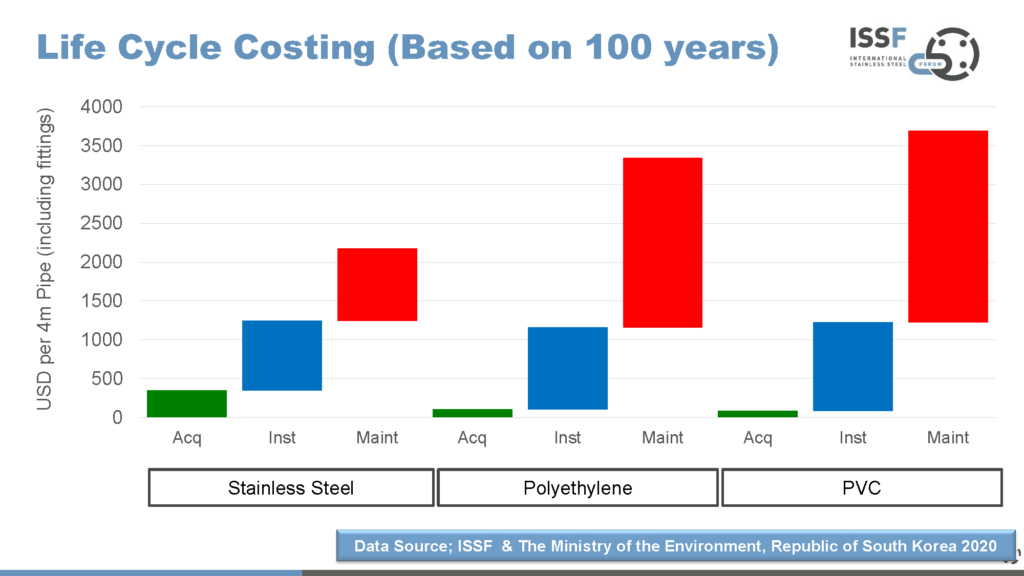 The first three case studies showed the cost efficiency of stainless steel, especially 3CR12 against competitor materials. Stainless steel competes well against specific plastics used in drinking water applications as shown by ISSF studies.
The first three case studies showed the cost efficiency of stainless steel, especially 3CR12 against competitor materials. Stainless steel competes well against specific plastics used in drinking water applications as shown by ISSF studies.
The life span used in this exercise is 100 years and based on the US$ costs per 4m of installation pipework including fittings. This compares stainless steel, polyethylene, and PVC. Stainless steel was calculated to cost $2172 per 4m length, polyethylene costs $3340 and PVC $3690 for the same length.
STAINLESS STEEL REMAINS SIMPLY BRILLIANT
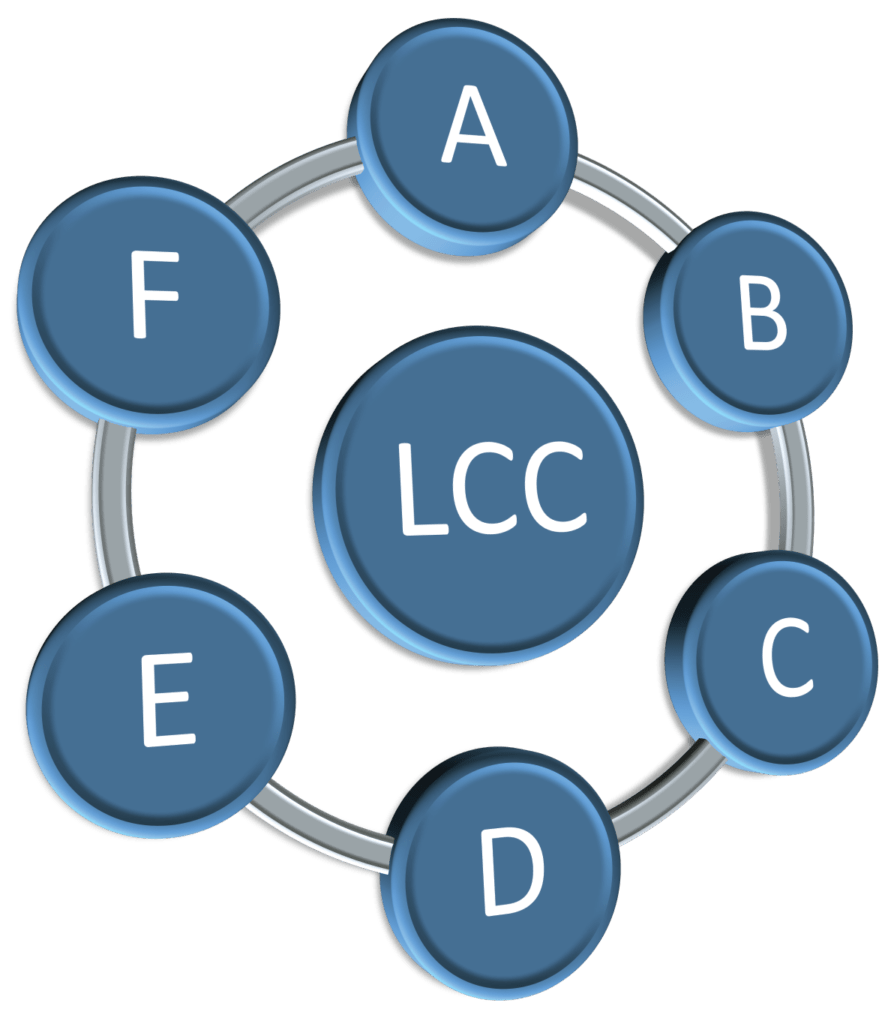 In all applications stainless steel shows substantial Life Cycle Costing benefits. A - Acquisition Costs: Stainless steel contains more than 70% recycled material.
In all applications stainless steel shows substantial Life Cycle Costing benefits. A - Acquisition Costs: Stainless steel contains more than 70% recycled material.
B - Fabrication and Installation: Stainless steel offers ease of fabrication and the mechanical properties allow for lighter structures.
C - Operational Costs remains lower due to its durability.
D - Lost production Costs: The durability of stainless steel has less downtime and the reduction of related costs.
E - Maintenance Costs: Less downtime means lower maintenance costs.
F – Recycling: Due to the high end of life material recovery rate, there is implied savings. Stainless steel is 100% recyclable


